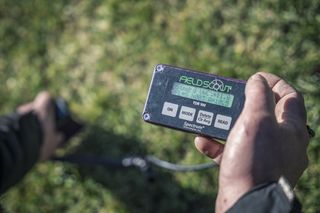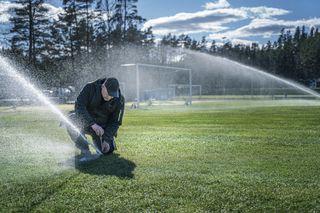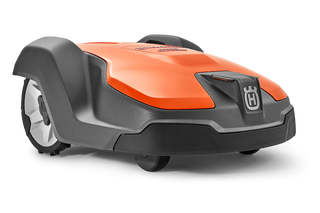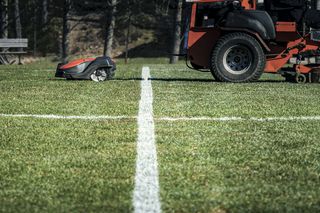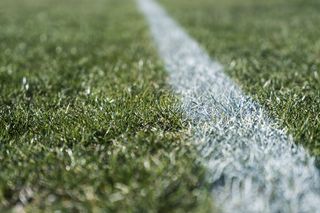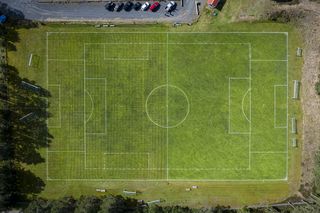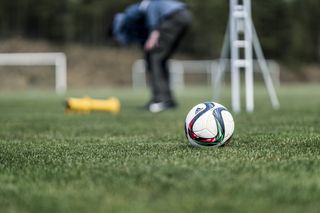Spend less time mowing and focus on improving the pitch
Mowing is a time-consuming task that prevents many groundsmen from doing other things that could improve the quality of their football pitches. For sports grass expert Simeon Liljenberg, the solution is simple: let a robotic mower do the work. This would free up lots of valuable time for many football clubs.
“You could gain an extra day – every week”
Football pitches are often mowed up to three times per week. This involves significant fuel costs, as well as many hours of work: each pitch takes 2–3 hours to mow, depending on which type of machine is used. “This could be done by a professional Automower®, meaning that you would gain approximately one extra day every week to spend on tasks that could improve your pitch,” says Simeon Liljenberg. Here are the top three tasks he thinks you should consider doing while the robotic mower takes care of the mowing.
Aerate, aerate…and aerate again
You can never aerate too much. “On the contrary, many football clubs aerate their pitches far too rarely” Simeon says. Continuous use of an aerator enables a better pitch climate. It increases the amount of air in the soil and makes it possible for both water and grass roots to get really deep into the ground. And longer roots give you a more durable pitch: one that better withstands frequent use. “When you’re aerating, why not also take the opportunity to remove visible weed to prevent it from spreading to other areas of the pitch? Do it right away and avoid unnecessary, time-consuming extra work later in the season.”
Check moisture and irrigation
Measure the moisture content of the soil: preferably, with a moisture meter. The moisture content should be 20–25 %. If you get a figure below this, then your pitch is too hard and it could be a good idea to increase irrigation to also stimulate good growth. If, on the other hand, the figure is higher, the football pitch is too soft, and you should probably cut down on the irrigation. This is because a too soft football pitch is less resistant to wear, and if the surface is slippery the risk of injury increases. “If you have some extra time, you could also check your irrigation system and, if needed, adjust the sprinklers to make sure that water is spread over every part of the pitch. This is an important task that’s often forgotten.”Fix damaged spots now
Firstly, take care of all damaged spots. It’s really worth it. Don’t just leave them to recover by themselves, because they often won’t. Secondly, repair them immediately. The longer you wait, the longer it’ll take for the grass to recover. And just don’t pop a loose divot back to its place, Simeon points out and explains why: “When putting a divot back, make sure to press it properly into the ground to prevent the formation of an air pocket, which might cause the grass to dry out.”
| About Simeon Liljenberg |
|---|
|

